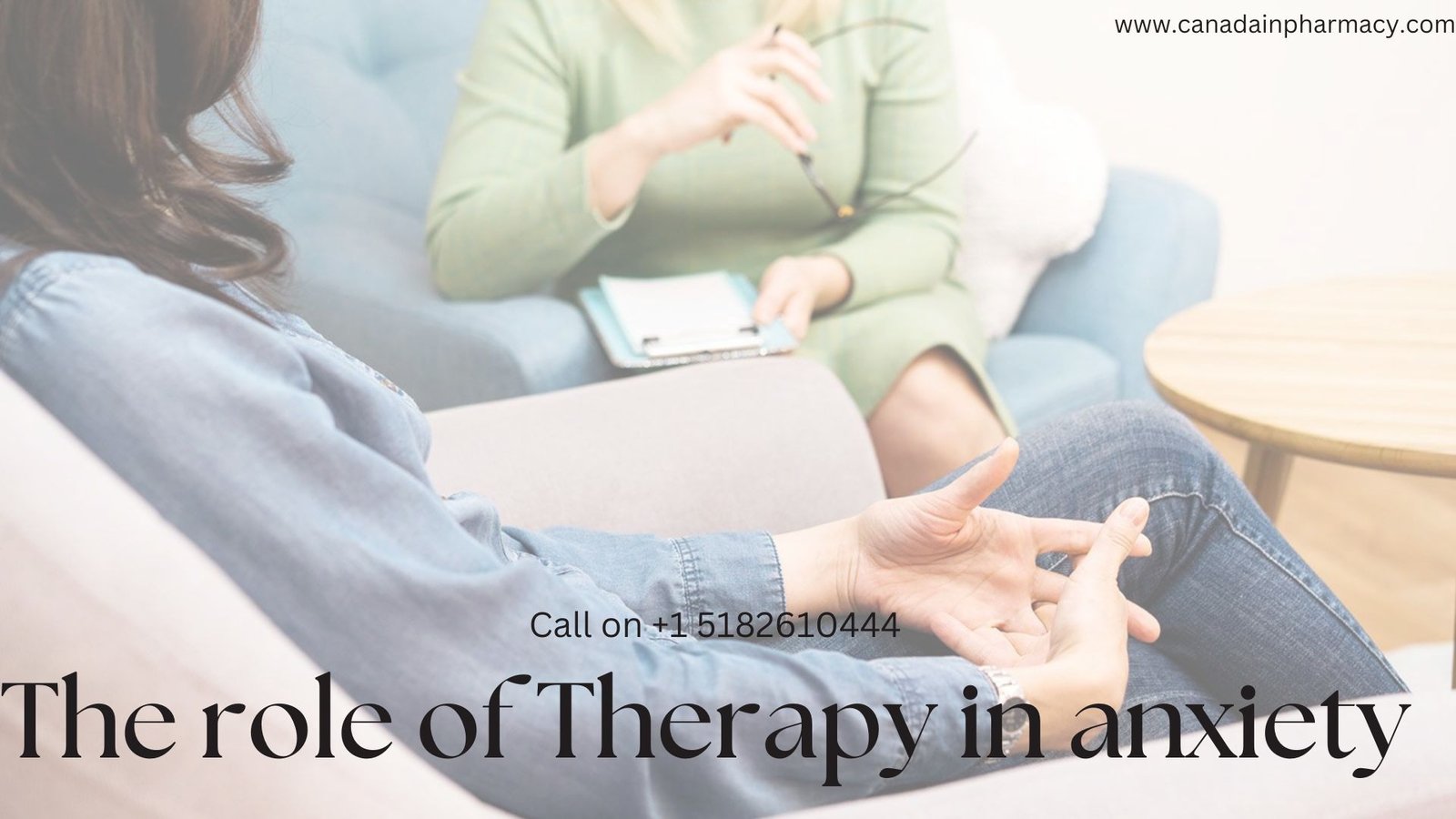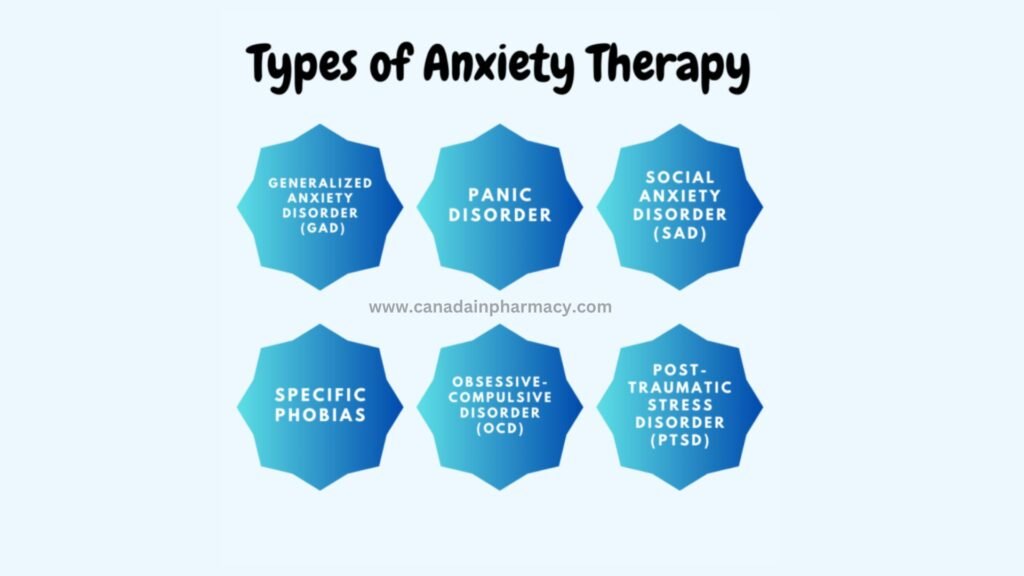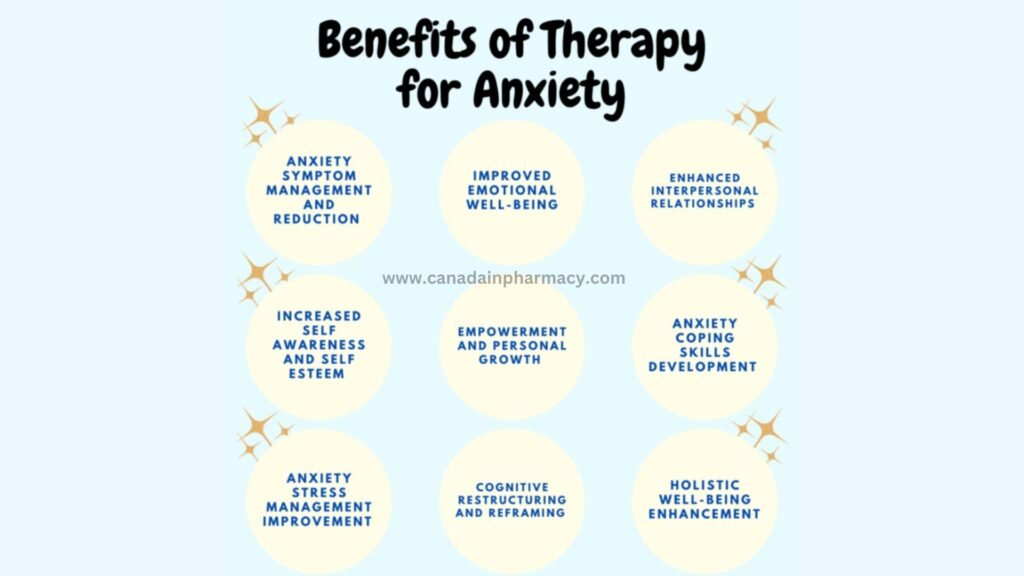
The Role of Therapy in Treating Anxiety Disorders
The Role of Therapy in Treating Anxiety Disorders
Anxiety disorders are one of the most common mental health problems affecting millions of people around the world. Such disorders include generalized anxiety disorder (GAD) and panic disorder, social anxiety, and specific phobias. Anxiety, if left untreated, can affect a person’s quality of life, influencing personal relationships, work performance, and overall well-being. While medication is usually prescribed to control the symptoms of anxiety disorders, treatment for the root causes and the tools used to cope with them are from it. Let’s explore how therapy may be the best method for those who suffer from anxiety.
Understanding Treatment for Anxiety Disorders
Evidence-based treatment for anxiety disorders usually involves personalized interventions tailored to an individual’s specific needs. Therapy is thus primarily aimed at enabling individuals to understand their anxiety, identify sources of anxiety, and develop appropriate coping mechanisms in order to diminish the impact it has on everyday life. Long-term strategies towards improving mental health are thus implemented, unlike medications, which essentially address symptoms only.
This also gives a person a safe and nonjudgmental space to express their thoughts and feelings. Such an understanding will lead to higher self-awareness, which in turn will enable people to make better decisions concerning their mental health and well-being.
Types of Therapy for Anxiety
There are several types that have been proven to be effective in treating anxiety disorders. The most common approaches include:

1. Cognitive-Behavioral Therapy (CBT):
CBT has been considered a gold standard treatment for anxiety. It enables clients to identify maladaptive thought processes that lead them to anxiety; it helps these clients challenge them and replace with healthier, constructive thoughts, helping them reduce the symptoms and to have better mastery over their anxiety responses to aversive situations. CBT combines behavioral strategies for overcoming avoidance behaviors: gradual exposure to feared situations or stimuli.
2. Exposure Therapy
Exposure therapy is highly effective in treating phobias, obsessive-compulsive disorder, and post-traumatic stress disorder. Exposure therapy is when an individual gradually faces their fear in a controlled environment, such as a room. Repeated exposure slowly helps desensitize the person to their anxiety response. A person who is afraid of speaking in public would begin by practicing speaking in front of a mirror and then advance to a group of people.
3. Dialectical Behavior Therapy (DBT)
DBT aims to teach mindfulness, distress tolerance, emotional regulation, and interpersonal effectiveness. It is more effective for those who experience intense emotions accompanying anxiety. DBT empowers individuals with the skills needed to cope with stressful situations in life, thus staying emotionally stable and resilient.
4. Acceptance and Commitment Therapy (ACT)
ACT promotes acceptance of thoughts and feelings rather than fighting or avoiding them. It encourages individuals to commit to action that is aligned with their values while they are managing their anxiety. ACT increases psychological flexibility in people, meaning the ability to adapt to stress and challenges and stay focused on meaningful goals.
5. Psychodynamic Therapy
This type of therapy delves into unconscious processes and past experiences that may be contributing to anxiety. This knowledge can help make sense of such emotions and reduce the hold anxiety has on their lives. Such may include unhealed childhood trauma or negative patterns of attachment, cultivated to foster healing and self-compassion.
6. Group Therapy
Group therapy allows individuals to relate to other people going through similar things. Through experience sharing and peer learning, community can be instilled and feelings of isolation reduced. Group therapy often involves some portions of CBT or other validated therapies.
Advantages of Therapy in Anxiety Disorder Treatment
It has many benefits for those afflicted with an anxiety disorder:
a. Increased Self-Awareness: Therapy helps the individual understand the triggers and patterns of their anxiety, allowing them to take proactive steps toward management.
b. Practical Coping Strategies: Therapists provide tools and techniques, such as relaxation exercises, grounding methods, and mindfulness practices, to help individuals manage anxiety in real-time.
c. Improved Emotional Regulation: Through this, individuals learn to identify, process, and express emotions in healthier ways.
d. Improved Problem-Solving Ability: It helps individuals learn how to better deal with problems, thus reducing feelings of hopelessness.
e. Long-Term Outcomes: Unlike medication, which only provides temporary relief, therapy gives the individual skills that they can use for the rest of their lives to control anxiety.
f. Validation and Support: It offers a safe environment where an individual can share their feelings without fear of judgment, thus creating a sense of understanding and connection.
g. Improved Relationships: Therapy will help the person overcome anxiety-related challenges and enhance communication and relationships with others.

Combining Therapy with Other Treatments
Although therapy is effective on its own, it may be used in conjunction with other treatments to help produce even better results. Some people might find that a combination of it and medication would work best for them, especially if their symptoms are severe or debilitating. Medications like SSRIs or benzodiazepines may provide temporary relief so that individuals can be more active in therapy.
Lifestyle changes can further support the therapeutic process. Regular exercise, a healthy diet, adequate sleep, and stress management techniques such as yoga or meditation can complement therapy and enhance overall well-being. Additionally, incorporating self-help resources, such as anxiety workbooks or apps, can provide additional support between therapy sessions.
Finding the Right Therapist
Choosing the right therapist is essential for the success of anxiety treatment. It’s important to find a licensed professional with experience in treating anxiety disorders. When searching for a therapist, consider factors such as their therapeutic approach, experience with specific anxiety disorders, and their ability to build a strong therapeutic alliance. Feeling comfortable and supported by your therapist is crucial for achieving positive outcomes.
Online therapy platforms also made therapy possible, allowing persons to connect to licensed professionals for therapy from home. This helps people who might not be in a position to access in-person therapy due to geographical or logistics reasons.
Conclusion
Obviously, therapy is a critical treatment, as it resolves the underlying causes of anxiety and gives a client equipping tools to manage their symptoms. Practices like CBT, exposure therapy, and ACT provide long-term benefits that empower an individual to live healthier, more fulfilling lives. Combining therapy with other treatments and lifestyle changes can enhance its effectiveness while maintaining a holistic approach in the management of anxiety.
Therapy is a radical step in regaining full control and peace of mind for someone experiencing anxiety. Having the right support and strategies, one can totally overcome anxiety and live with that much more balance and self-confidence.

From Hypertension to Happiness: My Road to Wellness
Hello, my name is Sarah. I come from the cosmopolitan city of Chicago and have gone from hypertension to happiness. My story is one of strength and flexibility, overcoming health obstacles and coming out strong and happy. Life with hypertension can be hard, but it is also a journey of learning from difficult circumstances. So let me take you all on my health journey, from high blood pressure to happiness.
Background Information
High blood pressure is common in the United States, affecting millions of people and posing significant risks to both physical and mental health. When high blood pressure entered my life, it wasn’t just a surprise; It was a wake-up call that made me realize the consequences and take control of my health.
My Journey
The day my high blood pressure was diagnosed was an emotional blow. Facing the reality of my health condition, I experienced fear, doubt, and hope. Despite the turmoil, I decided to take charge of my health and rewrite the health story.
Impact on My Life
Hypertension had a negative impact on all elements of my life. It loomed large in daily routines and interactions, requiring attention and changes. Despite these obstacles, I see potential for growth and improvement by prioritizing my health and happiness above all else.
Coping Strategies
Filled with determination, I happily accept changes in my lifestyle. I changed my diet, saying goodbye to unhealthy treats and accepting physical activity as a routine. I took advice from healthcare professionals and found fresh clarity and purpose in navigating the intricacies of hypertension management.
Challenges and Setbacks:
The route to wellness was not without challenges. Medication changes, periods of doubt, and unforeseen obstacles all tested my resilience. Despite each failure, I emerged stronger and more motivated than before, refusing to let setbacks dull my determination.

Progress and Achievements
As I navigated the ups and downs of my journey, the results became a source of motivation. Normalized blood pressure levels and fitness standards—each accomplishment indicated my steadfast commitment to wellness. With each step forward, I felt a renewed sense of focus and possibility.
To anyone battling hypertension or health difficulties, I offer these words of hope: You aren’t alone. Accept proactive self-care, train yourself with knowledge, and never underestimate the value of determination· Your trip may be filled with difficulties, but remember that determination and willpower, happiness awaits on the other side.
As I reflect on my journey from hypertension to happiness, I am grateful for the lessons learned, the challenges overcome, and the strong support of the people who walked along with me. May my story serve as a light of hope for those starting their wellness journeys.
